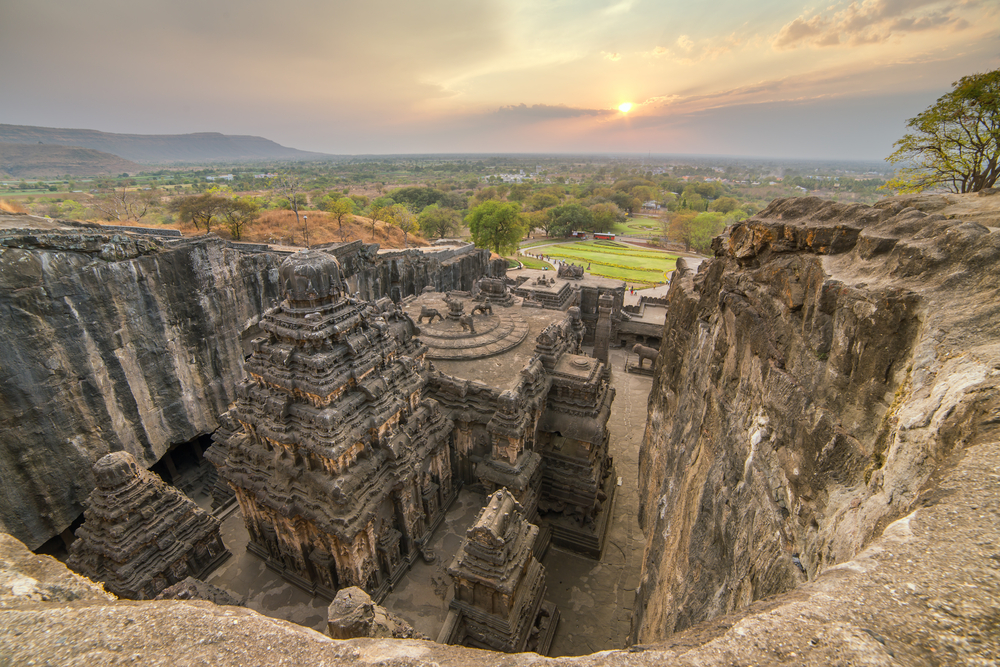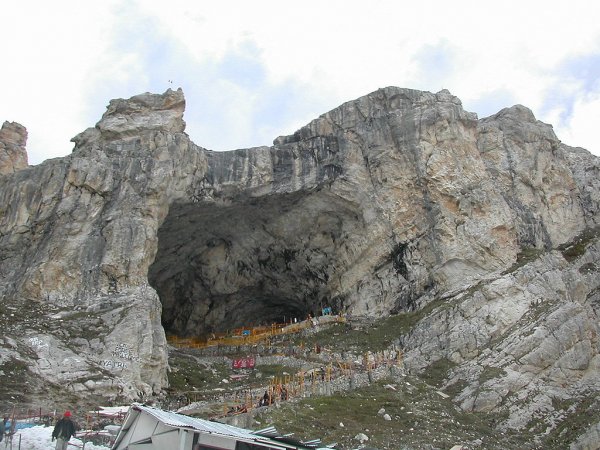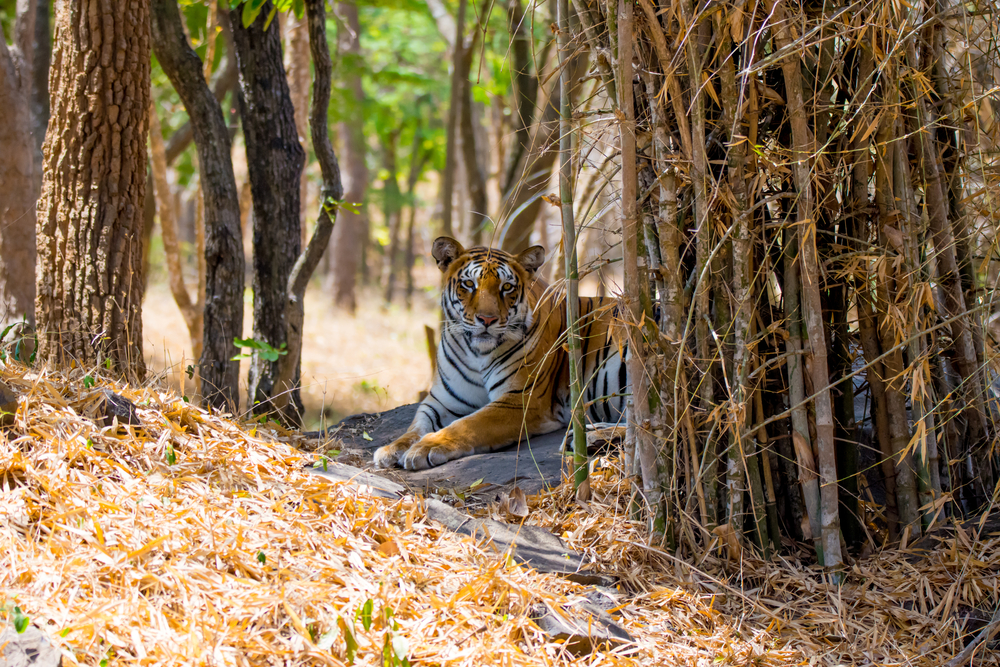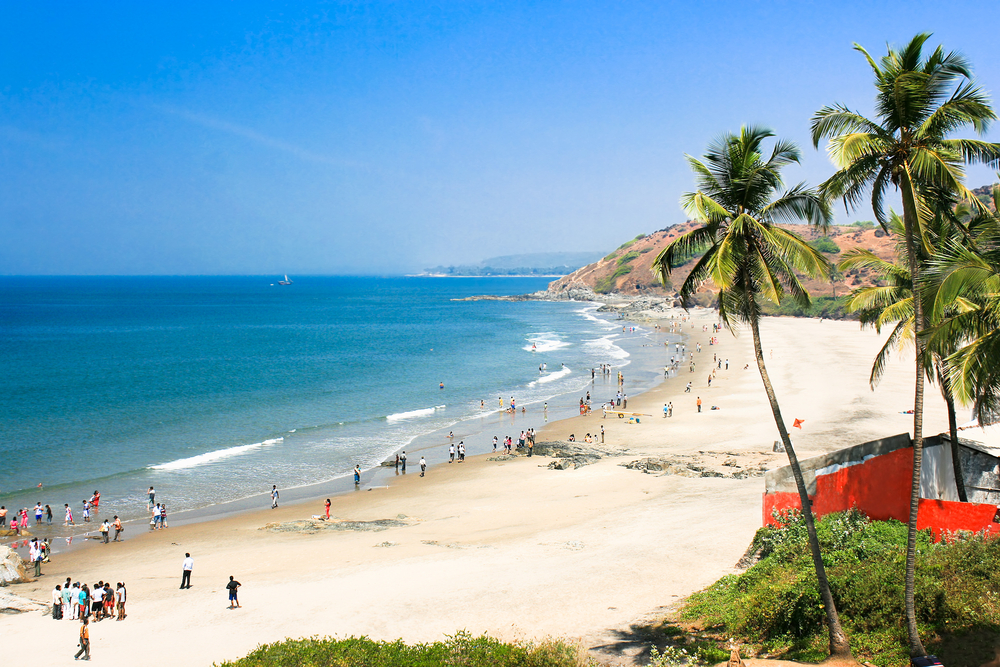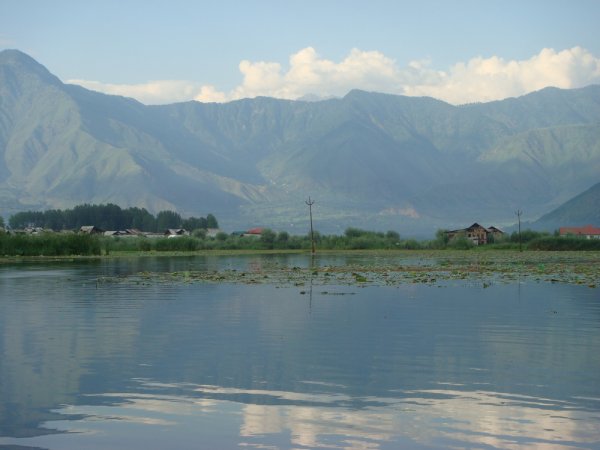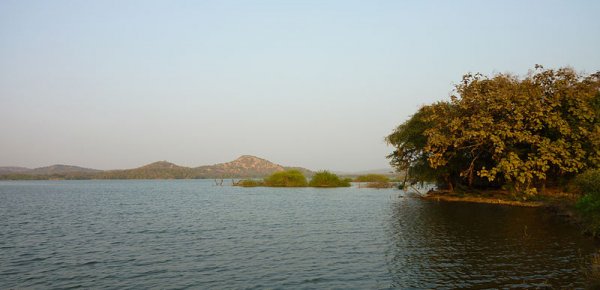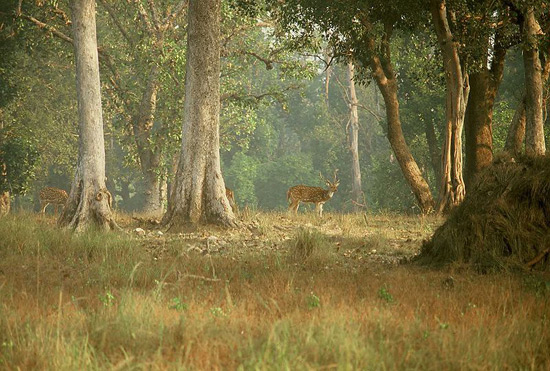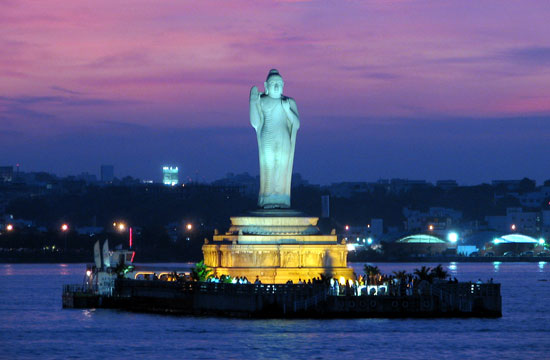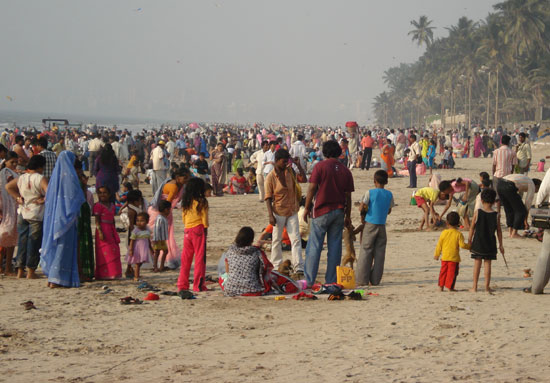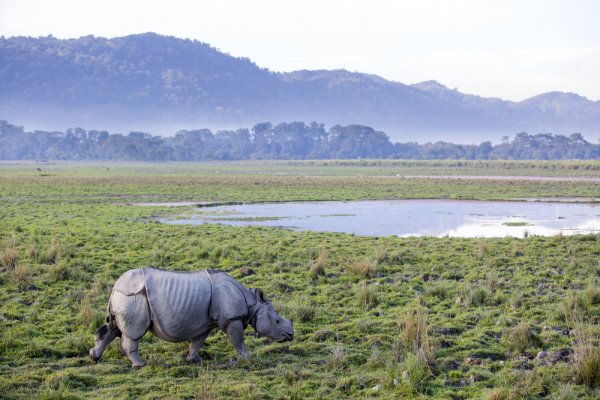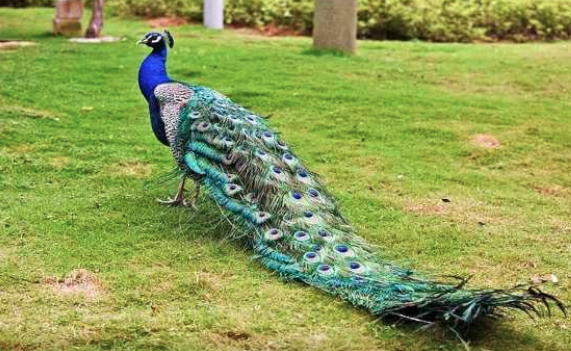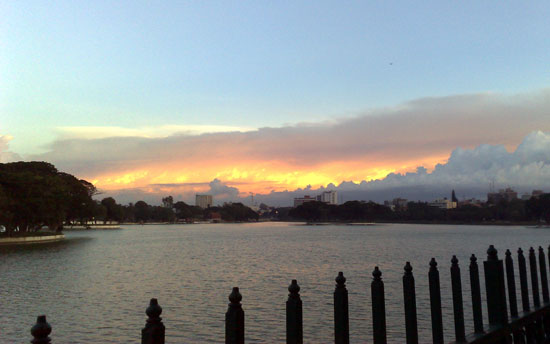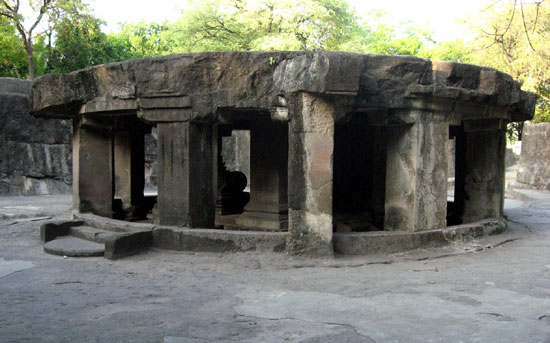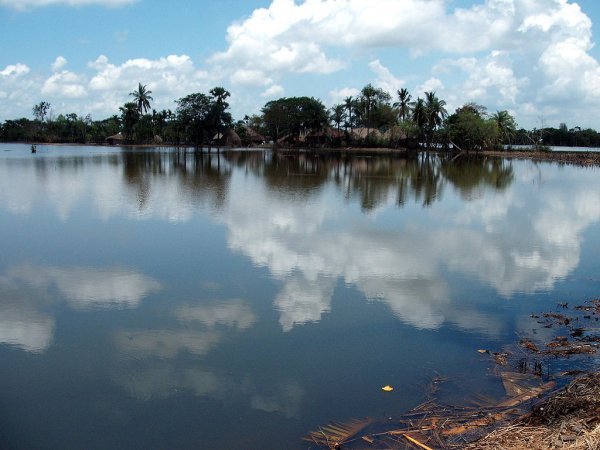Points of Interest
Ajanta and Ellora Caves
North of Aurangabad District
Maharashtra, India
The Ajanta and Ellora cave complexes are recognized as some of the world's greatest archaeological monuments and the epitome of ancient Indian rock-cut architecture. They were carved by generations of Hindu, Buddhist, and Jain monks who lived, worked, and worshipped here. Ajanta features 30 Buddhist caves, including five chaitya-grihas (prayer halls), many viharas (monasteries), and a few unfinished complexes. The structures at Ajanta date back as far as the 2nd century BCE. Ajanta also exhibits paintings and sculptures that are considered masterpieces of Buddhist religious art. Ellora comprises 12 Buddhist, 17 Hindu, and five Jain cave monasteries and temples dating from 600 to 1000 CE. The most famous is the Kailasanatha Temple, devoted to Lord Shiva and recognized as the world's largest monolithic structure carved top-down from a single rock.
Amarnath
About 141 kilometers east of Srinagar Forest Block
Jammu and Kashmir, India
Situated at an altitude of about 3,888 meters (12,831 feet) inside a huge cave, the cave shrine of Amarnath, according to ancient Hindu mythology, is where Lord Shiva told his consort Parvati about the secret of life and eternity. It now comprises the natural cylindrical ice Shivalingam (symbol of worship of Lord Shiva), which can grow up to 3.7 meters (12 feet) tall from May to August but gradually thaws thereafter due to the warm weather, and other lingams representing Parvati and Ganesha (son of Shiva). This shrine is over 5,000 years old and a highly important Hindu pilgrimage destination, attracting nearly 400,000 devotees in July and August during the 45-day annual pilgrimage season called Amarnath Yatra.
Bannerghatta National Park
Bannerghatta Main Road, Bannerughatta
Bangalore, India
Immerse yourself in nature at Bannerghatta National Park, which offers several areas to explore. Take a safari tour to see tigers, lions, and Himalayan black bears among many others, and visit the zoo and its birds, reptiles, and mammals including panthers and hog deer, totaling about 95 species. A museum also is on site. There is a butterfly park covering two hectares (five acres) and includes a 1-kilometer (.62-mile) trail through landscaped gardens. There is an area for those wishing to camp as well. Guided tours and educational talks are offered at the park.
Beaches of Goa
Coastline of Goa, West of Margao
Goa, India
The multiple beaches of Goa, with a backdrop of the Western Ghats and rocky crags, are famous for their stunning natural beauty. The golden Canacona Beach, in Canacona district, is the gateway to many of Goa's southern tip beaches (like Palolem, Agonda, and Rajbhag). The Palolem Beach features a sweeping crescent of white sand, coconut trees, a tiny island amid a freshwater stream, and pleasant tranquility. It offers swimming, surfing, dolphin cruises, fishing trips, lodging (including local family homes, shacks, and tent resorts), cafés, food stalls, and bars. Miramar Beach, where the Mandovi River meets the Arabian Sea, offers soft sands, palm trees, dolphins, the Agonda Fort, and a spectacular sunset view.
Chowpatty Beach
Marine Drive
Girgaon Chowpatty
Mumbai, India
By day, the sandy shores of Chowpatty are packed with Mumbaikars asleep in the shade of the trees or swimming and sunbathing fully clothed. By night, the beach comes alive with Ferris wheels, yogic gymnasts, performing monkeys, and wandering fortune tellers. The enthusiastic food hawkers prepare bhelpuri and gola (a syrupy crushed ice dessert) for all comers. Bollywood films are often shot on Chowpatty, and street plays are performed on the promenade. During the Ganesh Chathurthi festival, gigantic statues of the elephant-headed god are pushed under the waves by millions of devoted pilgrims. Koli fishermen work the waters at the south end of the beach with their huge nets.
Dal Lake
Northeastern Srinagar Srinagar
Jammu and Kashmir, India
One of the most beautiful and famous lakes of India, the Dal Lake extends across 18 square kilometers (seven square miles) and is surrounded by a boulevard, Mughal-era gardens, parks, and hotels. The lake is linked to numerous other lakes of the Kashmir Valley and divided by causeways into four basins (Gagribal, Lokut Dal, Bod Dal, and Nagin). It is best known for its numerous Victorian-era shikaras (wooden houseboats), which afford visitors unforgettable rides across the serene, scenic surroundings. The lake also offers water surfing, skating (when the lake's surface freezes in winter), kayaking, canoeing, and angling. The lake's surroundings are great spots for trekking and cycling.
Gir National Park
West of Kodinar-Dhari Highway
Southeast of Junagadh
Gujarat, India
Founded in 1965 and extending over 1,412 square kilometers (545 square miles), Gir National Park is one of Asia's most important protected areas and conserves several threatened wildlife species (including Asiatic lions). It comprises thick forests, grasslands, diverse flora and fauna, broad-leafed and evergreen trees (including acacia, teak, and tendu), scrub trees, steep rocky hills, ravines, rivers, streams, sulfur springs, numerous settlements of cattle herders, and some Hindu shrines. The fauna includes Indian gazelles, black bucks, four-horned antelopes, grey musk shrews, Indian pangolins, wildcats, small Indian civets, Indian jackals, pale hedgehogs, crocodiles, and about 300 species of birds. Gir also offers well-maintained routes, guided tours, jeep rides for wildlife viewing, and government-run forest lodges.
Guindy National Park
Rangeguindy
Chennai, Tamil Nadu 600025, India
The smallest national park in India and one of the few located in a metropolitan area, this 2.8-square-kilometer (1-square-mile) park is an extension of the grounds surrounding Raj Bhavan, the official residence of the governor of Tamil Nadu. Despite its small size, it manages to squeeze in a variety of forests, scrublands, lakes, and streams. Some 14 species of mammals and 150 species of birds are found here, along with many amphibians and reptiles including geckos, chameleons, monitor lizards, and the endangered star turtle.
Husain Sagar
Hyderabad, India
Many of this city's features seemed to have been built to celebrate one thing or another, and this delightful artificial lake is no exception. Ibrahim Quli Qutub Shah recovered from a serious disease back in the 18th century and thought he'd commission a 16-meter-deep (52-foot-deep) lake with a splendid observatory on its bank. In 1993 the Dalai Lama himself inaugurated the 350-ton statue of the Buddha that stands resplendent on an island in the midst of Husain Sagar. Don't be fooled by the rich diversity of birdlife and the fishes that swim near the surface: the lake is incredibly polluted with industrial chemicals and shouldn't be swum in, even if the thought did cross your mind in those sweaty climes.
Jim Corbett National Park
Off of Kalagarh Dam Road, Northwest of Ramnagar
Uttarakhand, India
Jim Corbett National Park, established in 1936, is Asia's oldest national park and India's first tiger reserve. It is most famous for its diverse wildlife, including Bengal tigers, leopards, jackals, Asiatic elephants, hedgehogs, common musk shrews, Indian pangolins, king cobras, crocodiles, and almost 600 species of birds (like peafowls, flycatchers, great barbets, ducks, and partridges). Extending over 1,319 square kilometers (510 square miles), the park's topography includes the Sonanadi Wildlife Sanctuary, majestic Himalayan mountains, hills, thick forests, grasslands, rivers, reservoirs, streams, catchments, and diverse flora (including flowering trees, bamboos, shrubs, herbs, and climbers). The region also offers good lodges, catering, guided tours, elephant rides, and watchtowers for the many tourists who come here every year.
Jog Falls
Off of State Highway 50
Shimoga District
Karnataka, India
One of India's most beautiful and highest waterfalls, the Jog Falls is a creation of the Sharavathi River, with water falling from a height of around 253 meters (830 feet). Also known as Jogada Gundi and Gersoppa Falls, the falls is considered the jewel among India's many natural attractions and draws a large number of tourists every year. In addition, the Jog Falls are a major source of hydroelectric power, and the Linganmakki Dam near the falls serves the Mahatma Gandhi Hydroelectric Project.
Juhu Beach
Juhu, Mumbai, India
Young couples cuddling in the moonlight, the red and orange sun descending behind the horizon, bronzed athletes doing push-ups, lifeguards keeping a keen eye on children: these are just some of the sights you'll see on the upscale Juhu Beach in the central suburbs of Mumbai. While the sunbathing is excellent, the water is too dirty to swim in safely. However, there is plenty else to do at the various resorts, coffee shops, beauty parlors, and-for some unknown reason-genuine Italian restaurants that line the beach. The romantic Marine Drive promenade earns the moniker "The Queen's Necklace" at night, such is the effect of the countless tiny lights that illuminate it. When the sun goes down, Juhu becomes a human-powered theme park, which will please the environmentally conscious to no end.
Kaziranga National Park
Between AT Road and the Brahmaputra River
North of Nagaon District
Assam, India
Established in 1905 and extending over 430 square kilometers (166 square miles), the Kazinranga National Park comprises dense semi-evergreen forests, tall elephant grass, lower Himalayan peaks, marshlands, four rivers (Brahmaputra, Diphlu, Mora Diphlu, and Mora Dhansiri), varied flora and fauna, coffee and rubber plantations, tea gardens, rivulets, ponds, and lakes. The wildlife includes tigers, civet cats, great Indian one-horned rhinoceroses, Indian elephants, Indian bison, swamp deer, barking deer, sloth bears, monkeys, and pythons. There are over 450 species of birds including Oriental honey buzzards, Himalayan griffons, storks, pied hornbills, kites, white-tailed eagles, fish eagles, pond herons, and many migratory birds. The park offers elephant rides, jeep drives, observation towers, and private and government lodges.
KBR National Park
Kasu Brahmananda Reddy Park Road Number 2, Jubilee Hills
Hyderabad, India
Kasu Brahmananda Reddy Park, popularly known as KBR National Park, is a vast spread of lush greenery and rich fauna which is located in the middle of Hyderabad city. The park, along with its picturesque beauty and rich flora and fauna, is also historically significant and includes the vast Chiran Palace. There are around 600 varied species of trees and plants, around 140 species of birds, and 20 species each of reptiles and mammals. See a range of butterflies as well while exploring paved trails. Food vendors set up outside KBR National Park, which charges a fee for entry.
– Information provided by Hyderabad Tourism
Kovalam Beaches
Southern Thiruvananthapuram Thiruvananthapuram District
Kovalam, Kerala, India
The Kovalam Beaches, on the Arabian Sea coast, are particularly famous for their crescent-shaped coastlines, special varieties of marine life, ancient places of worship (including big churches and Hindu temples), and rocky promontories with calm waters. The region is surrounded by the Kovalam town with the Lighthouse Beach, Hawah Beach (known also as Eve's Beach), Samudra Beach, seaport of Vizhinjam, shopping zones, beach resorts, cottages, private coves, hotels, restaurants, and Ayurvedic (herbal) health salons that attract large number of local and foreign tourists throughout the year. This tropical paradise also facilitates sunbathing, swimming, and catamaran cruising.
Lake Ulsoor
Ulsoor
Bangalore, India
Bangalore's first artificial lakes were created in the 16th century to supply drinking water and places for dhobi wallahs (washermen and -women) to work in. Sadly, the last 50 years or so of urbanization have converted most of these lakes into residential zones, golf courses, and playgrounds, but at least Ulsoor remains. There is no more beautiful a sight in Bangalore than watching the sunset over the calm waters of Ulsoor. Boat trips can be made across the lake, although swimming is unwise, given the high level of heavy metals in the water. The Sri Guru Singh Sabha shrine, located on its banks, was built in 1943 and is the gathering place for Bangalore's Sikh community. Every Sunday more than a thousand worshippers come here to eat an afternoon meal.
Marina Beach
Eastern coast of Chennai Triplicane
Chennai, Tamil Nadu, India
Marina Beach, extending 12 kilometers (7.5 miles) along the Bay of Bengal, is Asia's longest and the world's second longest beach. It is famous for its soft golden sands, blue waters, and sunrise and sunset views. Its surroundings feature spacious boulevards, green lawns, statues of Tamil scholars and famous personalities, the Senate House of the University of Madras, Chepauk Palace, old Saracenic-style buildings, an aquarium, and a lighthouse. In the evenings, the shoreline is dotted with numerous food operations offering mouthwatering delicacies, vendors selling shells and glass ornaments, and different kinds of entertainment activities like surfing, strolling, and pony rides. The strong undercurrents, however, make swimming or bathing dangerous.
Nilgiri Mountains
Off of Coonoor Road/67 Nilgiris District
Tamil Nadu 643202, India
The Nilgiri (Blue Mountains), extending across the states of Tamil Nadu and Kerala in South India, are a significant part of the larger Western Ghats Mountain system. The prominent features of this biosphere reserve, which lies at altitudes ranging between 2,280 and 2,300 meters (7,524 and 7,590 feet), include the highest peak, Doddabetta, at about 2,637 meters (8,652 feet); the popular hill station Ooty; Silent Valley National Park; huge populations of large mammals (like tigers and elephants); many ethnic groups; rainforests; grasslands; tea gardens; agricultural and horticultural lands; rare flora; narrow valleys; rivers, rivulets, and waterfalls; and a cool climate. The Nilgiri, commonly known as the Nilgiri Hills, is a major tourist destination and offers trekking, hiking, and climbing activities.
Pataleshwar Cave Temples
Jangali Maharaj Road
Pune, India
This is ancient history, Pune-style. The Pataleshwar Cave Temples date back to the 8th century CE and boast exquisite rock carvings pertaining to various Hindu deities. The shrine to Lord Shiva the Destroyer features altars, pillars, and seats hewn from the hard rock and is filled with priceless idols and artifacts. At the doorway is a vast brass bell that has been beautifully preserved over more than a millennium. Although the site was never completed (perhaps due to a minor earthquake), there is much to admire about it and you won't find much older structures in and around the city. The most impressive section is the square-shaped inner sanctum featuring a linga icon dedicated to Shiva.
Sanjay Gandhi National Park and Kanheri Caves
Vihar Lake Road
Powai, Mumbai, India
Sanjay Gandhi holds the distinctions of being not only the largest urban park on earth, but also as one of the few national parks to be situated within the city limits of a major metropolis. Two million visitors a year come for its invigorating terrain of hillocks, lakes, and pastures, and for the possibility of encountering endangered species such as chital (spotted deer), monitor lizards, and paradise flycatchers. You can traverse the park in a brightly colored narrow-gauge "toy train," one of the few of its kind left in the world. Perhaps the defining attraction of the park is the 2000-year-old Kanheri Caves, which feature wondrous Buddhist sculptures and reliefs fashioned from basalt rock.
Sundarbans National Park
Off of Chargheri-Lakshbagan Road and Satjelia Road
South of Sandeshkhali
West Bengal 743370, India
Spread across 10,000 square kilometers (3,860 square miles) of land and water, the Sundarbans National Park comprises the world's largest and thickest group of mangrove forests, rivers, rivulets, and lakes. There are more than 64 species of flora including sundari, genwa, and dhundal trees; color-leafed plants; flowering plants; and alluvial grass. The animals include royal Bengal tigers, wildcats, fishing cats, wild boars, flying foxes, macaques, common grey mongooses, and pangolins. The birds include open-billed storks, kingfishers, eagles, spotted doves, woodpeckers, herons, egrets, herring gulls, green pigeons, and rose-ringed parakeets. Sundarbans also houses many reptiles, invertebrates, and some endangered species (like river terrapins, Gangetic dolphins, olive Ridley turtles, ground turtles, and king crabs).
Copyright © 1993—2024 World Trade Press. All rights reserved.

 India
India 